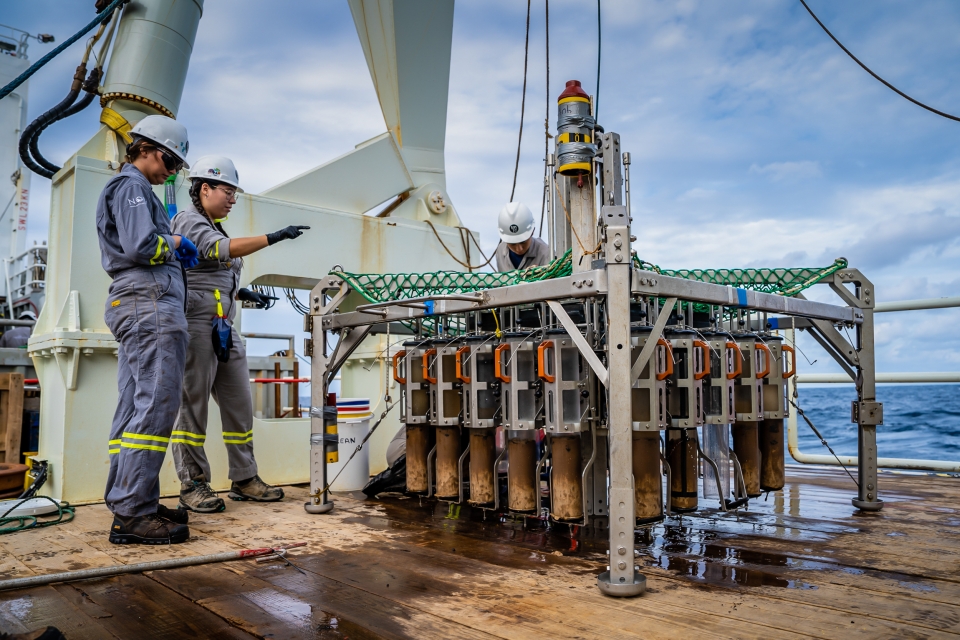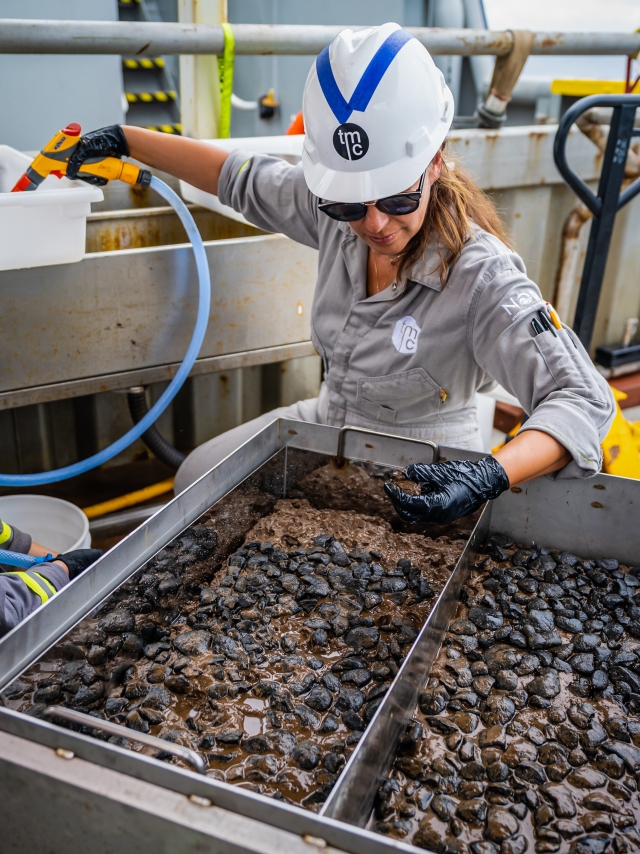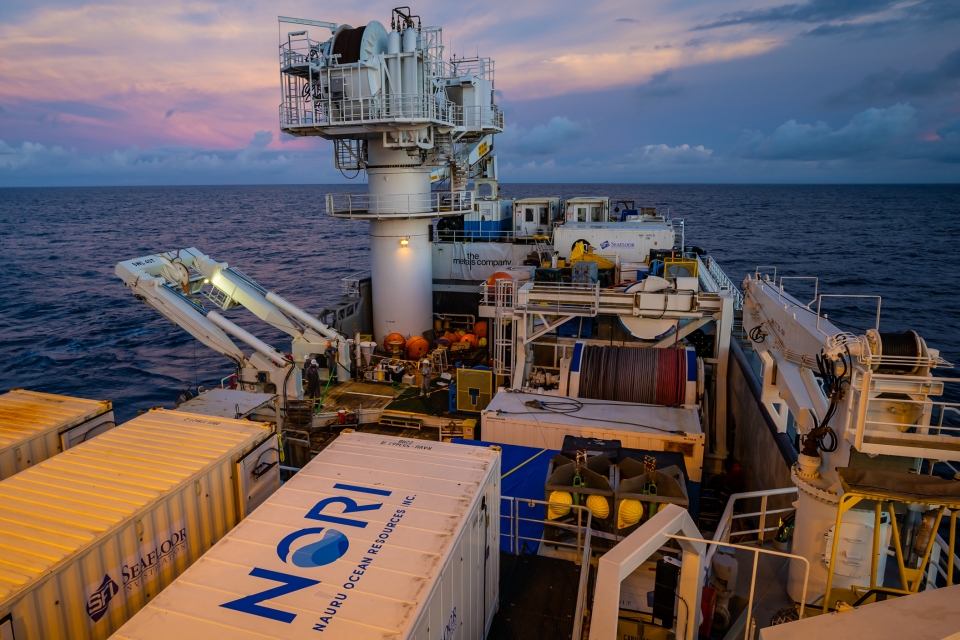In October, Allseas’ production vessel Hidden Gem collected the first polymetallic nodules from four kilometres below the sea’s surface in the Clarion-Clipperton Zone. NORI, a subsidiary of Allseas’ partner The Metals Company (TMC), is now tasked with monitoring the environmental impact of nodule collection.
First, NORI conducted sixteen offshore campaigns to define the nodule resource and establish an environmental baseline in the exploration area NORI-D in the Clarion Clipperton Zone (CCZ). Aboard a dedicated 103-metre-long monitoring vessel, scientists conducted pre-disturbance monitoring studies before NORI’s offshore strategic partner, Allseas, tested its nodule collection system.
Using this baseline, NORI will now monitor the environmental impacts of the integrated collector system test, consisting of a pilot collector on the seafloor, the production vessel Hidden Gem on the surface, a riser system connecting collector to the vessel and key components of the company’s Adaptive Management System.
Also read: VIDEO: Allseas’ Hidden Gem collects first nodules from 4 kilometres below the sea’s surface
Impact monitoring of nodule collection
The impact monitoring phase is conducted from a separate vessel by a multidisciplinary team consisting of independent scientists from international research institutions and contractors.
The researchers use a range of high-tech equipment including bespoke tools developed by MIT, Scripps and Sequoia Scientific to characterise the behaviour of sediment plumes generated by the prototype collector on the seafloor, three dedicated moorings, current meters with acoustic modems to provide real-time seafloor current data and a large array of other specialised equipment. Together, these represent the most extensive suite of instruments ever deployed for a single programme in the deep ocean.

The current campaign requires the coordination of 250 people across three vessels and also marks the initial trials of components of TMC’s Adaptive Management System, being developed in partnership with Kongsberg Digital. This system is expected to enable near-real-time 3D visualisation in the deep sea and the simulation and analysis of the impacts of NORI’s proposed operations at depths of four kilometres.
The scientists will also undertake post-collection surveys to compare the status of the environment before and after the test.
‘Testing of a fully integrated nodule collection system is a landmark event in the progression of our nascent industry,’ says the TMC’s Environmental Program Manager, Dr Michael Clarke. ‘The environmental data we collect from the test will be key to defining and quantifying the key environmental impacts of our nodule collection process, which up to this point have been subject to speculation and conjecture.’
Also read: World’s first polymetallic nodule vessel Hidden Gem nears completion in Rotterdam
International Seabed Authority
The data collected, together with many terabytes of existing baseline data, will form the basis of NORI’s application to the International Seabed Authority (ISA) for an exploitation contract, which the company expects to submit in the second half of 2023.
In September, NORI announced that it received the ISA’s recommendation to commence its pilot nodule collection system trials in the CCZ after its review of the Environmental Impact Statement (EIS) and Environmental Monitoring and Management Plan (EMMP).
Almost 150 years after the HMS Challenger expedition first discovered polymetallic nodules on the seafloor in the Pacific, NORI’s integrated system trials mark the first such trials to be conducted in the CCZ since the 1970s.
Also read: VIDEO: Allseas trials deepsea mineral collector 2500 metres below the surface
Polymetallic nodules
Polymetallic nodules, which lie unattached on the deep-ocean floor, contain high concentrations of critical metals needed to produce batteries to power electric vehicles and store energy from wind and solar energy.

Polymetallic nodule collection represents a new frontier in the offshore industry. Allseas entered into a partnership with DeepGreen, now TMC, a Canadian mining company at the forefront of deepsea polymetallic nodule collection back in 2019. Allseas developed the collector and riser system and converted a drill ship into a production vessel (the Hidden Gem), which were now used in the trials.
Picture (top): Equipment aboard the monitoring vessel from which a multidisciplinary team of independent scientists from international research institutions and world-leading contractors will monitor the impacts of collecting seafloor nodules (photo: TMC).








